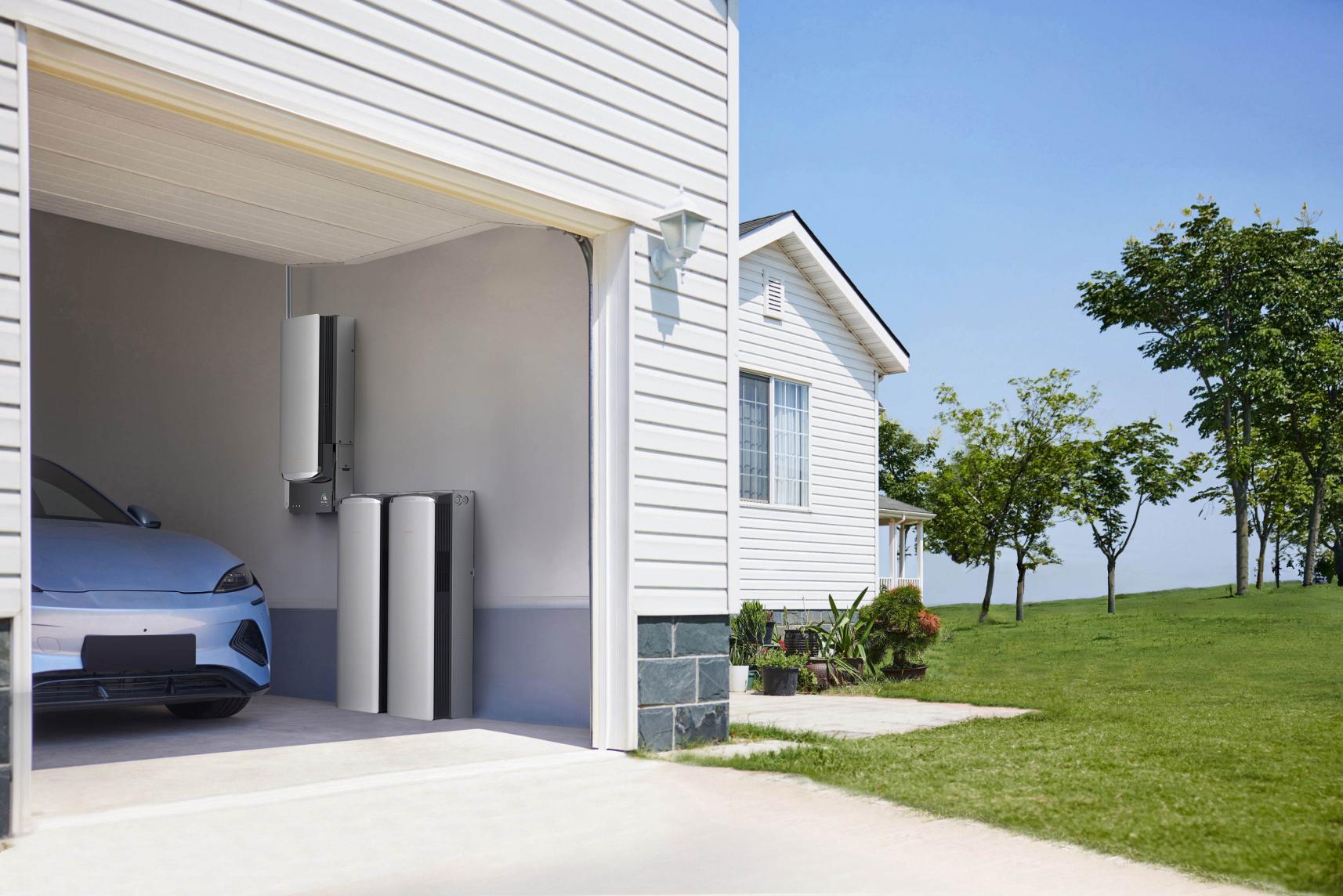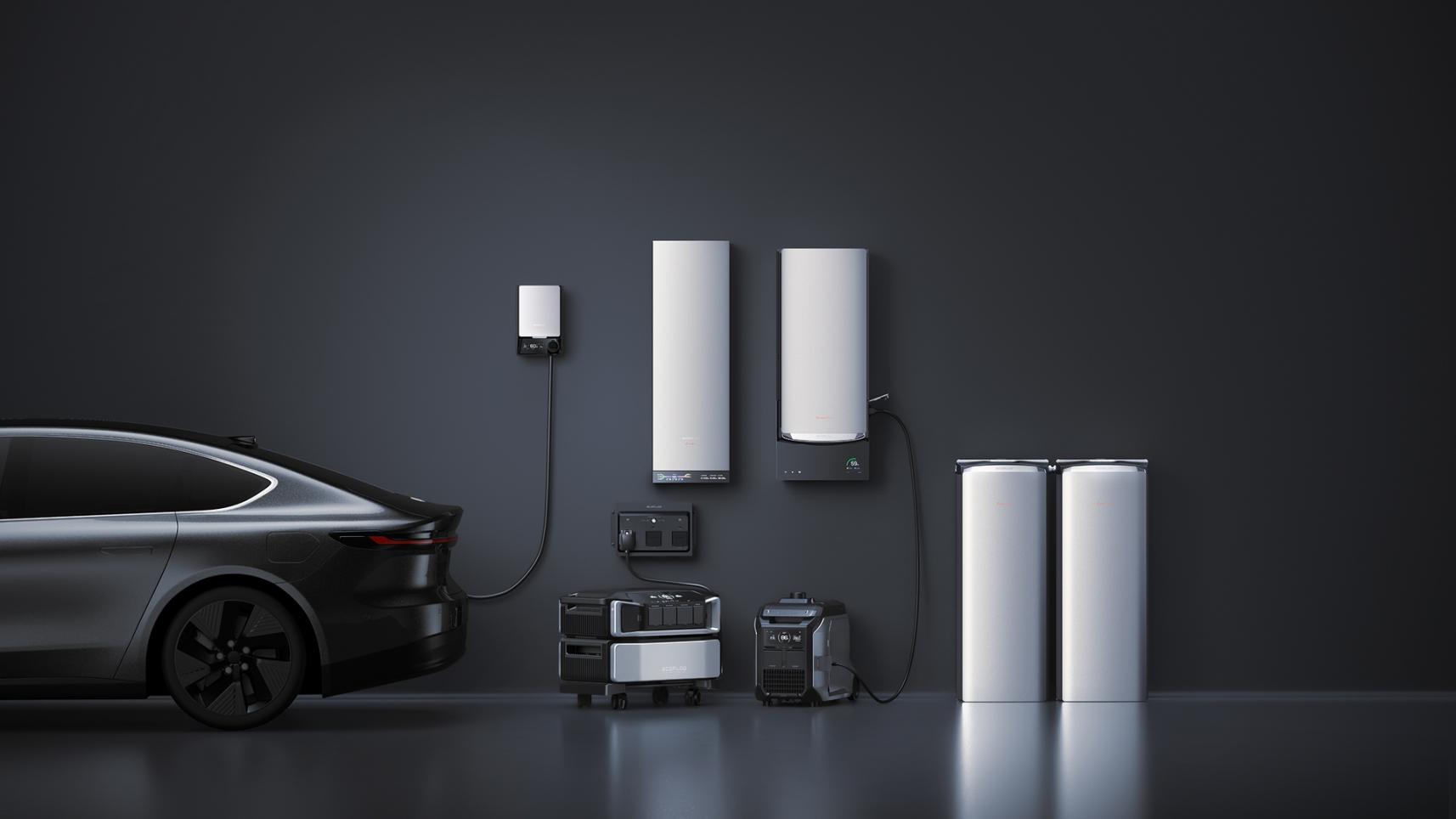Why Add an EV Car Charger When You Go Solar With a Home Battery?
Installing solar panels and a home battery can significantly reduce your electric bill. But adding an EV car charger creates a complete energy ecosystem where your roof powers your home and your car. You eliminate both electric bills and gas station visits while using truly clean energy. Here's why this three-part system makes sense.
Why Does an EV Car Charger Complete Your Solar and Battery Setup?
Think of solar panels, home batteries, and EV chargers as three legs of a stool—you need all three for maximum stability and benefit.
Triple Cost Savings Integration
Solar panels can slash home electricity costs by 50-90%, depending on the system size. Home batteries store excess energy produced during the day for use at night. Now add an EV car charger. The average American spends between $2,000 and $ 3,000 annually on gasoline, according to AAA's 2023 data. A solar-powered EV eliminates that expense entirely. You're getting free fuel from your roof—no more price anxiety at the pump. These three savings streams compound: solar covers home electricity, batteries optimize time-of-use rates, and EV charging costs drop to nearly zero. When pairing the charger with storage, consider a home Level 2 ocean EV charger combined with a high-capacity battery such as EcoFlow OCEAN Pro to create a “generate–store–charge” closed loop.
True Energy Independence
Grid electricity prices keep climbing—up 28% nationwide since 2020, per the U.S. Energy Information Administration. Gas prices fluctuate wildly in response to global events. Installing a solar EV car charger breaks both dependencies. You produce your own power, store it, and use it as needed. During power outages, your battery keeps essentials running while topping off your EV. This matters as extreme weather makes grid reliability shakier.
Environmental Impact Multiplier
A typical gas car produces about 4.6 metric tons of CO2 annually. Switching to an EV powered by grid electricity cuts that by roughly 50%. But charging with solar power? You drop transportation emissions to essentially zero. One solar array offsets home and transportation carbon simultaneously.
System Synergy Benefits
Solar panels generate peak power during midday, when most people are typically not home. Without an EV charger or battery, excess power flows back to the grid, earning a minimal credit—often around 3-5 cents per kWh. But charging your EV with that power means you're "selling" it to yourself at gasoline-equivalent prices—effectively 12-15 cents per kWh. That's 3-4x better value. Installers often bundle solar, battery, and EV charger installations, which cuts labor costs by 20-30% compared to separate projects.
This integrated approach transforms three good investments into one great system.


What Type of EV Car Charger Works Best With Solar Systems?
Not all EV chargers integrate well with solar setups. The right choice maximizes optimization benefits.
EV Car Charger Features
The best EV car charger for solar setups includes real-time production monitoring—it knows when your panels are generating power and automatically adjusts the charging speed. You also want adjustable amperage, typically 16-50 amps. This lets you dial down charging when solar production is low or boost it when the sun's blazing. Energy monitoring capabilities help you see exactly how many kWh your car consumes. Prioritize “solar-aware/coordination” chargers—for example, an ocean EV charger that focuses on solar coordination as a Level 2 home unit—so you can dynamically adjust current to PV output and household load.
EV Car Home Charger vs Charging Station
| Option | Power / Voltage | Charging Speed | Hardware Cost | Install Cost | Best Use |
| Level 2 EV Car Home Charger | 240V | ~20–30 miles/hour | $400–$700 | ~$550–$1,400 | Overnight or daytime at home |
| Commercial-Grade Charging Station (Residential) | Varies (faster) | Faster than Level 2 | $10,000+ (DC fast hardware) | Can reach tens of thousands; Level 2 commercial often $3,500–$15,000 per port | Situations needing very fast home charging |
For home solar integration, Level 2 home chargers make more sense since you’re charging overnight or when you’re home anyway.
Specific Requirements
A solar EV car charger needs to communicate with your solar inverter and battery system. Look for units supporting protocols like Modbus or OCPP. This lets all three components share data and coordinate. Your charger should detect when your battery hits your preset minimum reserve (say, 30% for home backup) and only draw from excess solar or battery surplus. Grid-interactive capability matters—if solar and battery are tapped out, the charger can pull supplemental power from the grid.
Smart Features Comparison
| Feature | Standard Charger | Solar-Optimized Charger |
| Solar Tracking | No | Yes |
| Scheduled Charging | Basic timer only | Solar production-based |
| App Control | Limited or none | Full energy management |
| Load Balancing | No | Coordinates with battery |
| Cost | $500-800 | $800-1,500 |
The price premium for solar-optimized features ranges from $300 to $ 700, but you recoup that investment through improved energy utilization within 1-2 years.
How Do Solar Power EV Car Chargers Work With Home Batteries?
These three components exchange energy with one another as much as is produced, stored, and required.
Daytime Solar Direct Charging
On sunny days when you're home, your solar panels feed power directly to your EV car charger. This is the most efficient path—no conversion losses. Your inverter directs excess production straight to the charging unit. If you produce 8 kW and your home uses 2 kW, that extra 6 kW pumps into your car at full speed.
Storing Batteries for Charging at Night
Solar panels won't power your home at night. That's where your home battery comes in. During the day, surplus solar energy is stored in battery storage. After the sun goes down, your EV charger uses stored solar energy. A standard home battery stores 10-15 kWh, which is sufficient to give your EV 30-50 miles of range overnight. The EcoFlow OCEAN Pro begins at 10 kWh per battery and can be stacked to 80 kWh (8 modules), supporting overnight top-ups of tens of miles to hundreds of miles of range, depending on the vehicle's efficiency.
Grid Backup and Load Management
Cloudy week with low solar production? Your system gets smart. Priority: essential home loads. Second: maintaining your battery reserve. Third: EV charging. If solar and battery can't cover everything, your solar EV car charger pulls supplemental power from the grid—but only as needed. Modern systems also utilize time-of-use rates, scheduling grid charging for off-peak hours when electricity costs are 40-60% lower. For high-power scenarios, the EcoFlow OCEAN Pro Inverter delivers 24 kW of continuous power and 50 kW of peak power, supporting up to 40 kW of PV input with 8 MPPTs. This ensures that in intense sunlight, you can prioritize critical home loads while still allocating substantial charging power to the EV.
Energy Flow Priority System
Your power management system makes instantaneous power routing decisions. Household needs always take priority. Next, charge your battery to your desired set point (typically 90-100% while you are awake). Last, EV charging receives the remainder. This avoids exhausting your emergency battery by charging your vehicle, then running out of power at home.
What Are the Costs and System Size of Solar EV Charging?
Let's discuss real numbers, as this investment is significant.
Cost Savings Breakdown
The average US electricity bill is $137/month or $1,644/year. Solar panels reduce that by 70-90%, saving an estimated $$1,150 to$$ 1,480 per year. Average 12,000-mile gas bill: $2,200/year. Going to an EV powered by solar: zero fuel bills. Annual savings: $3,350-3,680. Over 25 years, that's savings of $83,750.
System Sizing Calculator
Average EV uses 300-350 Wh/mile. Twelve thousand miles each year translates to 3,600-4,200 kWh each year for the vehicle. The average residential household uses approximately 10,500 kWh annually, with a total annual requirement of 14,100-14,700 kWh. You would need a 10-12 kW solar system (approximately 30–35 panels at ~350–400 W each) to cover both. In the United States, Most people go for a 10-15 kWh battery size for overnight residential loads and partial EV charging.
Tax Credits and Incentives
The federal solar Investment Tax Credit covers 30% of your total system cost through 2032. Many states add rebates—California’s SGIP provides per-kWh battery rebates (base tiers often ~$150–$300/kWh; equity programs up to $1,100/kWh in 2025), while New York’s Charge Ready NY offers up to $4,000 per Level 2 port for workplaces/MUDs (not typical single-family residential). These credits can significantly reduce your upfront cost, depending on your eligibility.
ROI Timeline and Payback Period
A complete system costs $25,000 to $ 40,000, depending on its size. After tax credits: $17,500-28,000 net cost. Saving ~$3,100–$3,400 annually means payback in ~5–8 years. After that, it's pure profit for 15-20 more years. Additionally, home values typically increase by around $4 per watt of solar capacity installed, as noted in multiple studies.
Bundled Installation Discount
Installing everything at once saves a lot. Overlapping labor saves 20-25% of the labor costs. You don't have to redo electrical panel upgrades ($1,500-2,500 each). Permit costs are $ 200-$500 per job—doing it once, rather than three times, saves you $40.


FAQs
Q1. What Happens During Winter When Solar Production Drops—Can I Still Charge My EV?
Winter solar production typically drops 40-60% compared to summer, but you can absolutely still charge your EV. Your system will rely more heavily on grid power during these months, though you'll still benefit from whatever solar production occurs. Most solar EV car charger systems automatically balance the available solar energy, battery reserves, and grid power to optimize energy usage. Intelligent scheduling helps—program charging for midday when solar production is at its peak. Many users report that their annual solar production still covers 70-85% of their combined home and EV needs, with winter grid supplementation costing $ 80 monthly, which is still dramatically cheaper than using gas.
Q2. If I Don’t Own an EV Yet, Should I Still Install the Charger with My Solar System?
Yes, consider installing the EV car home charger system as part of your original solar and battery installation, even if you are 1-3 years away from purchasing an EV. It costs only an additional $800–$1,500 to run the electrical circuit bundled, as opposed to $2,000- $3,500 later as separate work. For incentives, a separate federal Alternative Fuel Refueling Property Credit (§30C) may cover 30% of home EVSE + installation up to $1,000 for eligible locations—this is distinct from the solar ITC. The charger uses zero energy when idle. When you do purchase an EV, you'll start collecting fuel savings immediately, without the wait for installation.
Q3. Can I Retrofit My Existing Solar and Battery Systems to Add Smart EV Charging?
Technically, yes, but integration quality depends on your current equipment. If your battery and solar inverter support standard communication protocols (Modbus, OCPP), you can add an interoperable smart EV car charger and reap most of the benefits of coordination. However, older systems (<2018) usually do not include these capabilities—you'll have your charger, but it won't coordinate with your generation intelligently. Pay $ 1,500-$3,000 for integration labor if retrofitting, compared to seamless integration when installing both simultaneously. Earlier, have an energy audit performed by a certified installer to test compatibility.
Conclusion
Installing an EV automobile charger as the final piece of the energy independence puzzle complements the battery and solar system. You'll eliminate two significant costs and achieve the highest environmental impact. When designing an integrated system, consider an ocean EV charger as the Level 2 home solution and the EcoFlow OCEAN Pro as the scalable battery and high-power backup core, which balances 24/7 household power and provides convenient EV charging. Get a complimentary audit by a certified solar installer and drive on sunshine today.